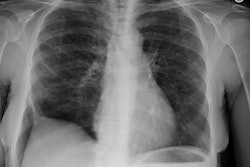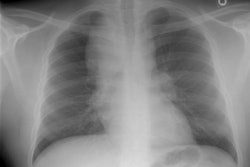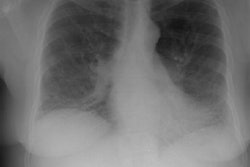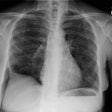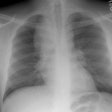Acute interstitial pneumonia: thin-section CT findings in 36 patients.
Johkoh T, Muller NL, Taniguchi H, Kondoh Y, Akira M, Ichikado K, Ando M, Honda O, Tomiyama N, Nakamura H
PURPOSE: To characterize the computed tomographic (CT) findings of acute interstitial pneumonia and to correlate the pattern and the extent of abnormalities with the time between symptom onset and CT. MATERIALS AND METHODS: The study included 36 patients (20 men, 16 women; age range, 22-83 years; mean age, 61 years) with histopathologically proved acute interstitial pneumonia who were identified retrospectively. The time between symptom onset and CT was 2-90 days (mean, 22 days; median, 17 days). The presence, extent, and distribution of various CT findings were evaluated. Disease duration and extent of each finding were compared by using the Spearman rank correlation coefficient. RESULTS: Areas with ground-glass attenuation, traction bronchiectasis, and architectural distortion were present in all 36 patients. Airspace consolidation was present in 33 patients (92%). The extent of areas of ground-glass attenuation (r = 0.45, P < .01) and the extent of traction bronchiectasis (r = 0.35, P < .05) correlated with disease duration. No other significant correlation was found between the CT findings and disease duration. CONCLUSION: A combination of ground-glass attenuation, airspace consolidation, traction bronchiectasis, and architectural distortion is seen in the majority of patients with acute interstitial pneumonia. The extent of ground-glass attenuation and traction bronchiectasis increases with disease duration.
PMID: 10352616, UI: 99280882
